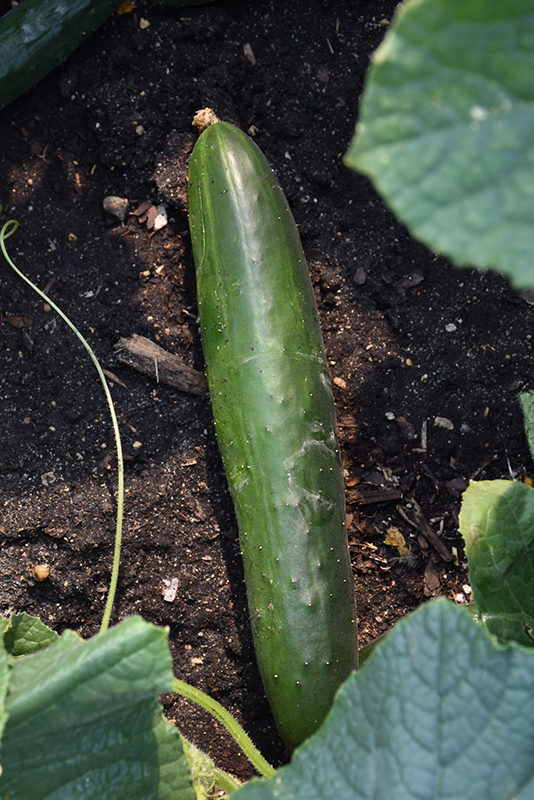Summer Dance Cucumber Cucumis sativus 'Summer Dance' Height: 22 inches Spacing: 12 inches
Sunlight:
Hardiness Zone: (annual) Group/Class: Japanese Burpless Description: A vigorous variety with high resistance to Downy and Powdery mildew and great heat tolerance; produces 12" long, glossy, dark green and slender cucumbers with sweet, crisp and burpless flesh; an excellent slicer, perfect for salads, sandwiches or wraps Edible Qualities Summer Dance Cucumber is an annual vegetable plant that is commonly grown for its edible qualities. It produces dark green long cucumbers (which are technically 'berries') with light green flesh which can be harvested at any point. The cucumbers have a sweet taste and a crisp texture. The cucumbers are most often used in the following ways: Planting & Growing Summer Dance Cucumber will grow to be about 22 inches tall at maturity, with a spread of 4 feet. When planted in rows, individual plants should be spaced approximately 12 inches apart. This vegetable plant is an annual, which means that it will grow for one season in your garden and then die after producing a crop. This plant is typically grown in a designated vegetable garden. It should only be grown in full sunlight. It does best in average to evenly moist conditions, but will not tolerate standing water. This plant is a heavy feeder that requires frequent fertilizing throughout the growing season to perform at its best. It is not particular as to soil pH, but grows best in rich soils. It is quite intolerant of urban pollution, therefore inner city or urban streetside plantings are best avoided. This is a selected variety of a species not originally from North America.; however, as a cultivated variety, be aware that it may be subject to certain restrictions or prohibitions on propagation. Summer Dance Cucumber is a good choice for the vegetable garden, but it is also well-suited for use in outdoor pots and containers. With its upright habit of growth, it is best suited for use as a 'thriller' in the 'spiller-thriller-filler' container combination; plant it near the center of the pot, surrounded by smaller plants and those that spill over the edges. It is even sizeable enough that it can be grown alone in a suitable container. Note that when growing plants in outdoor containers and baskets, they may require more frequent waterings than they would in the yard or garden.![]()
![]()
![]()
![]()
![]()
![]()
![]()
![]()
Characteristics
Applications
Ornamental Features
This guide is an online resource representing many of the varieties that we carry over the course of the season, and is intended for informational purposes only. Inventory varies seasonally, so we cannot guarantee that every plant will be in stock at all times - please contact the store directly for current availability. It does not include our entire selection of plants, so be sure to visit our store to see varieties that may not be represented on this list.


